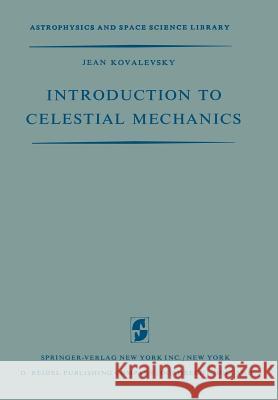Introduction to Celestial Mechanics » książka
Introduction to Celestial Mechanics
ISBN-13: 9789401175500 / Angielski / Miękka / 2012 / 134 str.
After the launching of the first artificial satellites preceding interplanetary vehicles, celestial mechanics is no longer a science of interest confined to a small group of astronomers and mathematicians; it becomes a special engineering technique. I have tried to set this book in this new perspective, by severely limiting the choice of examples from classical celestial mechanics and by retaining only those useful in calculating the trajectory of a body in space. The main chapter in this book is the fifth, where a detailed solution is given of the problem of motion of an artificial satellite in the Earth's gravitational field, using the methods of Von Zeipel and of Brouwer. It is shown how Lagrange's equations can be applied to this problem. The first four chapters contain proofs of the main results useful for these two methods: the elliptical solution of the two-body problem and the basic algebra of celestial mechanics; some theorems of analytical mechanics; the Delaunay variables and the Lagrangian equations of variation of elements; the expansion of the disturbing function and the Bessel functions necessary for this expansion. The last two chapters are more descriptive in character. In them I have summarized briefly some of the classical theories of celestial mechanics, and have tried to show their distinctive characteristics without going into details.











